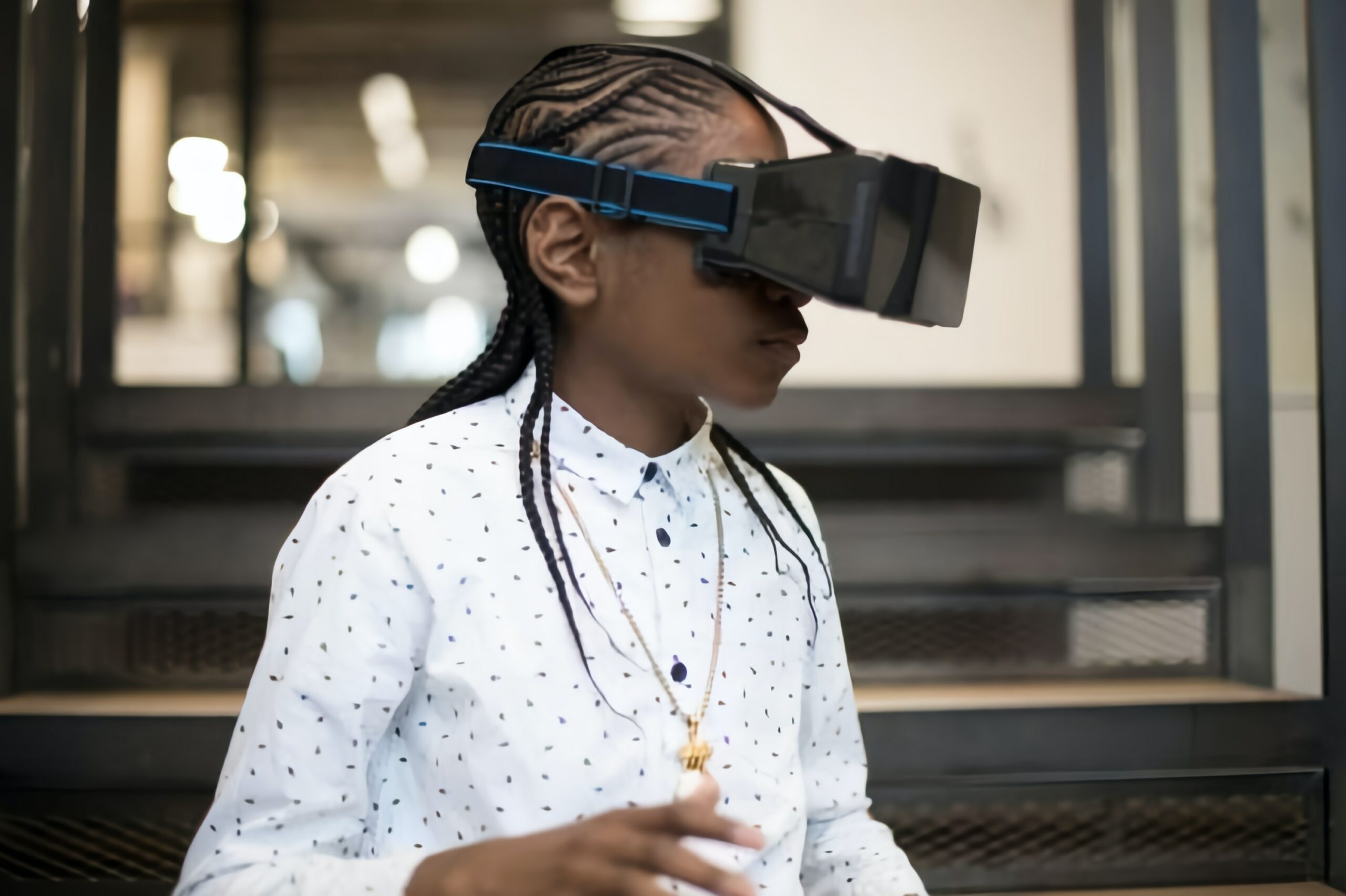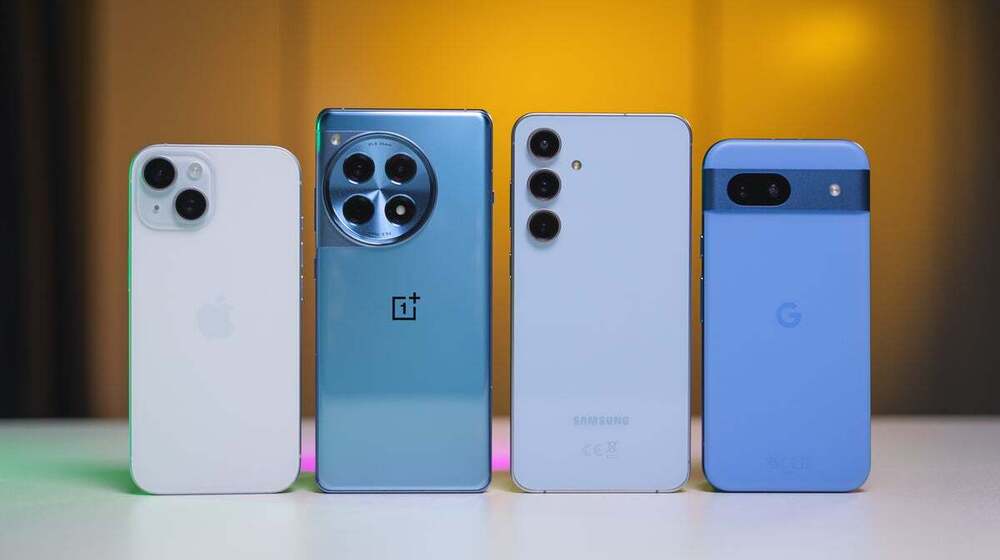The metaverse has been a buzzword in the tech sphere for years now.
But what is it exactly?
The future of the internet? Or a passing fad? A technology that will dictate our everyday lives over decades to come? Or something that we use only occasionally?
Here’s an in-depth look at what the metaverse actually is, the biggest challenges it faces, and the companies that have already embraced it.
What is the Metaverse?
Part of the difficulty in defining the metaverse is that there are many visions of what it is and what it can be.
Many tech experts compare the situation to talking about the internet in the 1980s. Like then, new and exciting technology is just emerging. But nobody knows exactly what potential it holds for the future.
At its core, the metaverse can be called an integrated network of virtual worlds that you can access via virtual reality (VR) headsets.

Photo by UK Black Tech on Unsplash
These headsets track users’ eye movements. This, together with feedback controllers and voice commands, allows them to properly immerse themselves in the virtual sphere.
This sounds familiar: Many gaming platforms already use this technology to let players become part of the worlds they create.
But the metaverse goes far beyond that.
Instead of being confined to gaming, users can pursue a huge variety of activities in the metaverse – especially social ones. From work and virtual shopping trips to meeting up with friends and going to concerts. Sports teams can build virtual stadiums so that fans can follow games. And universities and schools can harness it for education.
The key idea is that users can create avatars and acquire digital assets. These assets, rather than being tied to the world they originate in, should largely be portable across platforms.
One of the most ambitious visions of the metaverse was presented by Meta CEO Mark Zuckerberg. In fact, the company rebranded itself from Facebook just to highlight how integral it believes the metaverse will be to the future of tech.
In Meta’s vision, the metaverse is cast as a shared virtual space that you can immerse yourself in and that allows you to interact with hyperrealistic avatars of other people.
Does the Metaverse Already Exist?
So far, the vision that many companies present of the metaverse is just that: A vision.
However, there are many elements of what the metaverse could one day become that do already exist.
Many digital worlds are already hugely popular among users and often don’t require VR headsets to access them. Prime examples include Minecraft, Decentraland, The Sandbox, and Roblox.
From Minecraft to Decentraland – Thriving Metaverses
Minecraft allows users to build their own virtual worlds out of lego-like building blocks and to interact and collaborate with other users. It has spawned the creation of some truly gargantuan projects, from a recreation of Middle Earth from the works of JRR Tolkien to The Uncensored Library, a virtual space maintained by Reporters Without Borders that seeks to enable access to quality information in heavily censored countries.
Unlike Minecraft, which launched in 2009, Decentraland is a relatively new facet of the metaverse. Since 2020, this 3D virtual world browser-based platform has allowed users to buy virtual plots of land as Non-Fungible Tokens (NFTs). For this, it uses the cryptocurrency MANA, which in turn is based on Ethereum. Users can sell and buy digital property, exchange collectibles, explore, socialize, interact, and play games using their avatars.
The Sandbox offers similar opportunities. Users can acquire LAND parcels in the form of NFTs and use them to develop custom locations and games. You can even monetize your LAND parcels in-universe.
Roblox, finally, is an online gaming creation system that allows users to build and share their own video games. Founded in 2004, it’s one of the veteran elements of the metaverse. It was only in the second half of the 2010s, though, that Roblox’ popularity really took off. With the pandemic, its user base exploded. Now, Roblox has over 200 million users monthly. It’s especially popular with Gen Z. Only 14% of its user base is older than 25.
All of these metaverse companies also provide lucrative intersections with the burgeoning creator economy, allowing content creators to claim new virtual spaces for monetization.
Virtual Reality – Available for Everyone
Another element of the metaverse that already exists and is becoming more and more popular are VR headsets. In 2024, high-quality models that provide a truly immersive experience are available for as little as $300.
Google even offers a ridiculously cheap budget option – Google Cardboard. This foldable cardboard device allows you to experience VR with only your phone, for the price of $10.
Not all headsets go in for full VR, which somewhat isolates the user from their surroundings. Mixed Reality (MR) combines elements of VR and AR, providing an intersection between fully-digital and real-world objects. Microsoft’s HoloLens is a pioneering piece of tech in this field. Meta, for its part, seeks to bring its AR glasses to the market in 2024.
With the building blocks of the metaverse and the required technology all in place, its future may seem set. However, there are still several significant problems that need to be solved on the way to what could be the future of the internet.
What Are the Problems With the Metaverse?
As far as metaverse concepts have come in some ways, there are quite a few challenges to be solved before we can live in the future that Mark Zuckerberg envisions.
For one thing, VR headsets and augmented reality glasses are still clunky and unattractive. Not to mention that many people experience neck pain or motion sickness if they wear them for too long. Especially women suffer from these issues, as the fit of headsets is often optimized for men.
In fact, a recent survey found that less than a third of people who own VR headsets actually use them on a daily basis.
Another hurdle to the VR revolution is that many people actually dislike being completely separated from the world around them. While some users chase the VR experience for near-total escapism, many people feel uncomfortable with being utterly disconnected from their environment. This could be a significant barrier to life in the metaverse.
These technical and psychological hurdles, as well as privacy concerns, child safety issues, large-scale scams, and regulatory problems have hampered the development of the metaverse.
Digital privacy experts warn that the metaverse could be the ultimate surveillance tool, literally tracking a user’s every move.
In 2022, Meta came under attack after a woman revealed she had been verbally and sexually assaulted in its metaverse, with multiple male avatars attacking hers – likely not the only incident of its sort.
As with most emerging technologies, regulatory frameworks are lagging behind. How life in the metaverse will be shaped by international and national law remains to be seen.
Which Companies Are in the Metaverse?
Despite the growing pains of the metaverse, countless companies firmly believe in its future and economic potential.
Beside Meta, tech giants like Microsoft, Apple, and Google have invested billions in the metaverse.
But even non-tech businesses with a long offline history are embracing this new 3D dimension to the virtual sphere. Coca-Cola, J.P. Morgan, HSBC, Gucci, and Sotheby’s are all among them.
Coca-Cola launched a pixel-flavored drink in the metaverse before releasing it in real life. The Coke Byte launch included a Fortnite Creative island featuring four minigames that players could solve by working in tandem.
Welcome to cybertaste. Byte available now for a limited time only. Get yours, only at: https://t.co/0sPLiBh8fG. #CocaColaCreations #CocaColaByte pic.twitter.com/3UGiMCcrBc
— Coca-Cola (@CocaCola) May 2, 2022
Leading bank J.P. Morgan became one of the first to launch in the metaverse. Predicting a metaverse market size of $1 trillion, it established a lounge in Decentraland in early 2022. Another giant in the world of finance, HSBC, was not far behind. It acquired LAND in The Sandbox to engage with sports, esports, and gaming enthusiasts.
In a similar vein, the Italian fashion giant Gucci now offers its collection on Roblox. Users can invest in luxury garments for their avatars.
And even Sotheby’s, the well-known British auction house with almost 300 years of history behind it, is embracing the metaverse. It opened a virtual version of its London base in Decentraland, where users can admire the items up for auction.
What is the Future of the Metaverse?
Nobody can say exactly how the metaverse is going to develop and how big a part of our future lives it will become.
On one point, most experts agree, though: Its economic future is bright.
Bloomberg projects that the market will be worth $800 billion in 2024.
Other analyses, such as by Citi, hold that the metaverse-related economy could be worth as much as $13 trillion as soon as 2026. They forecast that over a third of global organizations will have joined the metaverse – and that over a quarter of the world’s population will be spending more than an hour a day in it.
The exact timeline of the metaverse’s development, however, is unclear and largely dependent on the global geopolitical and economic context. In 2020 and 2021, virtual worlds made huge advances due to the pandemic and the blended living between online and offline spaces that many people adopted.
No matter how fast the metaverse evolves, though, and what its final form will be – it offers exciting opportunities for both tech enthusiasts and investors today.

#Metaverse #Ultimate #Insider #Guide






